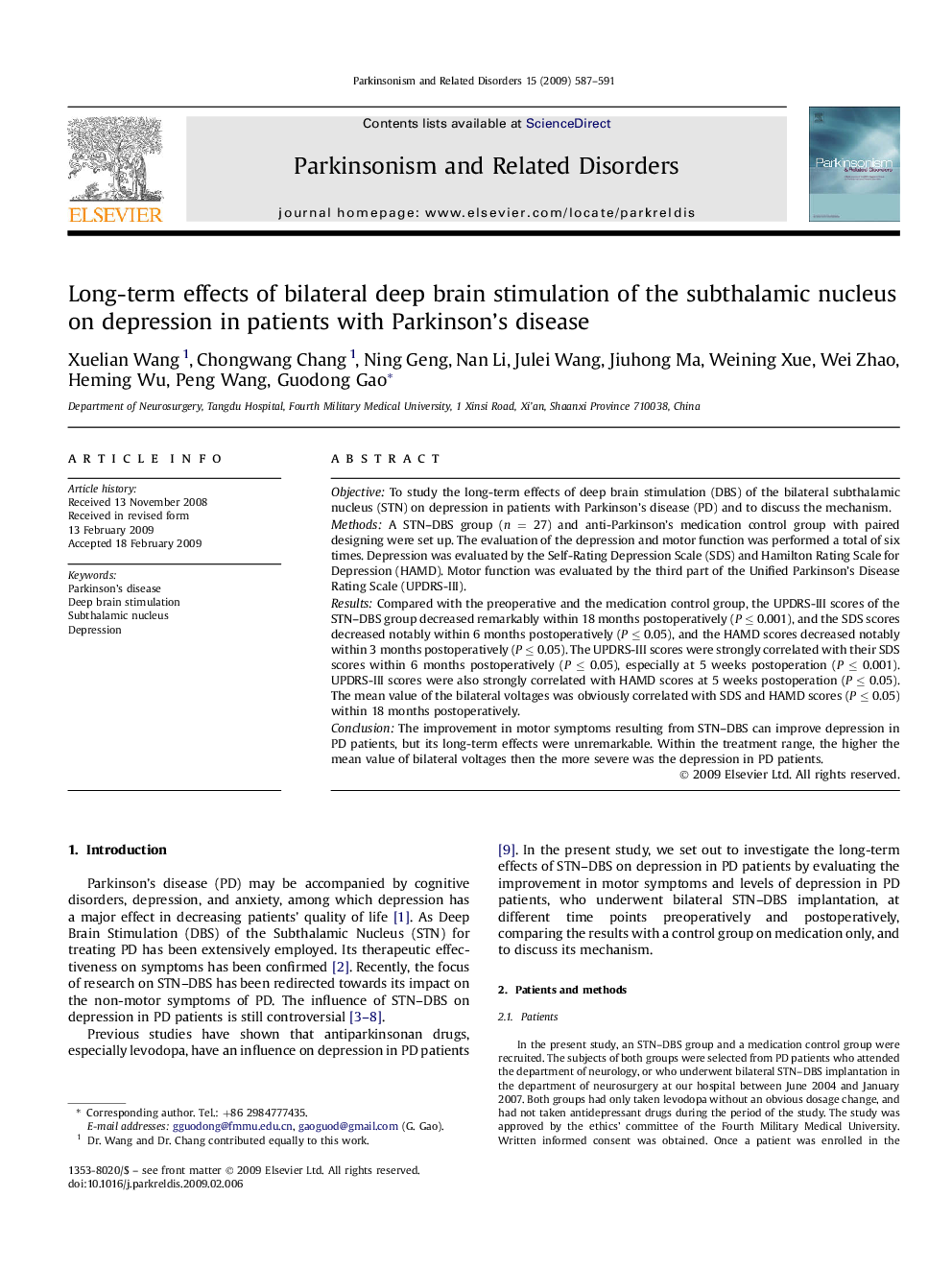| Article ID | Journal | Published Year | Pages | File Type |
|---|---|---|---|---|
| 1921694 | Parkinsonism & Related Disorders | 2009 | 5 Pages |
ObjectiveTo study the long-term effects of deep brain stimulation (DBS) of the bilateral subthalamic nucleus (STN) on depression in patients with Parkinson's disease (PD) and to discuss the mechanism.MethodsA STN–DBS group (n = 27) and anti-Parkinson's medication control group with paired designing were set up. The evaluation of the depression and motor function was performed a total of six times. Depression was evaluated by the Self-Rating Depression Scale (SDS) and Hamilton Rating Scale for Depression (HAMD). Motor function was evaluated by the third part of the Unified Parkinson's Disease Rating Scale (UPDRS-III).ResultsCompared with the preoperative and the medication control group, the UPDRS-III scores of the STN–DBS group decreased remarkably within 18 months postoperatively (P ≤ 0.001), and the SDS scores decreased notably within 6 months postoperatively (P ≤ 0.05), and the HAMD scores decreased notably within 3 months postoperatively (P ≤ 0.05). The UPDRS-III scores were strongly correlated with their SDS scores within 6 months postoperatively (P ≤ 0.05), especially at 5 weeks postoperation (P ≤ 0.001). UPDRS-III scores were also strongly correlated with HAMD scores at 5 weeks postoperation (P ≤ 0.05). The mean value of the bilateral voltages was obviously correlated with SDS and HAMD scores (P ≤ 0.05) within 18 months postoperatively.ConclusionThe improvement in motor symptoms resulting from STN–DBS can improve depression in PD patients, but its long-term effects were unremarkable. Within the treatment range, the higher the mean value of bilateral voltages then the more severe was the depression in PD patients.
